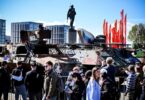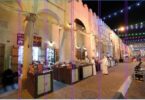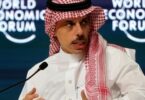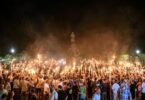Omer Carmi
With Ebrahim Raisi’s road to the presidency seemingly paved, the regime has been working to prevent low voter turnout and give him a vote of confidence through a landslide win.
This year’s Iranian presidential election cycle will probably be remembered as a dull one. Early in the process, the Guardian Council disqualified several high-profile figures from running in the June 18 vote, including former Majlis speaker Ali Larijani, Vice President Eshaq Jahangiri, and former president Mahmoud Ahmadinejad. The decision left judiciary chief Ebrahim Raisi as the most prominent candidate with no real competition, making for one of the most boring presidential races in Iran’s history. Even the three public debates failed to create excitement among the citizenry.
Despite the lack of fireworks and the near-certain outcome, several important questions have arisen in the lead-up to the vote. The answers could affect the regime’s legitimacy at home and its future policies abroad.
What Will the Turnout Be?
Iranian leaders have often used high voter turnout as “proof” of both the regime’s support base and the people’s “resistance” to the West. Supreme Leader Ali Khamenei continued this tradition in his last speech before the election, claiming that Western media are trying to “decrease the people’s turnout at the ballot boxes.” He then urged Iranians to vote and foil the supposed conspiracy.
In previous cycles, turnout ranged from 60% to 80% depending on the public’s excitement about the candidates and the perceived competitiveness of the race. This year, however, the bulk of the electorate seems weary of the country’s political affairs, and many pragmatic voters have been alienated by the aggressive rejection of candidates, so participation rates could be embarrassingly low for the regime.
According to recent data from the Iranian Students Polling Agency (ISPA), one of the country’s leading survey organizations, only 42% of respondents indicated that they will definitely vote. This number is in line with last year’s Majlis election, which generated the lowest turnout since the 1979 revolution—only 42% of voters showed up nationwide, and an amazingly low 26% voted in Tehran. If this year’s turnout is low in the capital but higher in smaller cities and towns, the former number would indicate lack of interest in the presidential race, while the latter may reflect greater interest in the municipal elections being conducted on the same ballot.
Will There Be a Second Round?
Iranian election law requires a candidate to receive more than 50% of the vote in order to win outright. If that does not occur this year, the two leading candidates will compete head-to-head in a second round on June 25. The last time a second race was necessary was 2005, when Mahmoud Ahmadinejad defeated Akbar Hashemi Rafsanjani.
ISPA polls indicate that around 64% of voters support Raisi. Although Iranian polls are not very reliable, Raisi has a good chance of matching Rouhani’s 2017 tally of 57%. Khamenei noted the significance of such a vote of confidence in his June 16 speech: “If a new president is elected by a significant majority of the votes, he will be a powerful president.” Indeed, several conservative candidates have already withdrawn from the race and endorsed Raisi in an attempt to consolidate the conservative camp behind him.
In contrast, the ailing reformist camp has not rallied around the sole remaining non-conservative candidate, Abdolnaser Hemmati. Some reformist leaders such as Mohammad Khatami and Mehdi Karrubi have endorsed Hemmati, but their influence is limited, and the broader reformist front has repeatedly emphasized that it will not support any candidate given the pre-race disqualification of its most favorable applicants.
Will Raisi’s First Speeches Reveal More About His Policies?
Since stepping onto Iran’s main political stage in 2017, Raisi has commented on current events from time to time, but his statements have tended to echo Khamenei’s without much elaboration. Likewise, the presidential race has not provided a lot of meaningful information to assess his current positions on the nuclear deal or international relations. Raisi focused his campaign on anti-corruption rhetoric, and the debates did not touch on foreign policy issues either, largely adhering to Khamenei’s request that this election concentrate on economic challenges.
When Raisi did address the Joint Comprehensive Plan of Action (JCPOA) during one of the debates, he indicated that he would adhere to the original nuclear deal as approved by Khamenei, and added that implementing it requires a strong government. He did not elaborate on the issue, instead deflecting tough questions with slogans such as “making sure that the interest of the people is met.”
Given that many of his positions are still a mystery, Raisi’s first speeches and press conferences as president-elect may be quite significant in shedding light on his near-term policy outlook. Rouhani and Ahmadinejad hinted at their emerging policies in their early post-election appearances, so observers should keep a close eye on what Raisi has to say in the coming days.
Who Will Be Nominated for Major Cabinet Posts?
ARaisi victory would likely result in a total government reshuffle. Rouhani confidants such as Foreign Minister Mohammad Javad Zarif and Vice President Jahangiri would be replaced with hardline or conservative figures; the same fate may also be in store for Atomic Energy Organization director Ali Akbar Salehi and Supreme National Security Council secretary Ali Shamkhani. Each of these positions was instrumental in Iran’s nuclear diplomacy during the Rouhani era, so reshuffling them would surely affect the negotiations surrounding Iran’s return to the JCPOA.
Consider, for example, the difference between Zarif’s negotiating style during the JCPOA era and the previous approach taken by potential top cabinet pick Saeed Jalili. In his 2019 memoir, CIA director William Burns disparaged Jalili’s approach to nuclear talks in the mid-2000s, recalling how he “embarked on nearly 40 minutes of meandering philosophizing about Iran’s culture and history.” Jalili was a candidate in the current presidential race but withdrew this week and endorsed Raisi, positioning himself as a potential nominee for various national security and foreign policy positions in the next government.
Will Rouhani Be a Lame Duck?
Since the next president will not be sworn in until August, Rouhani’s government could be relegated to mere placeholder status for the next few weeks. Yet history shows that outgoing Iranian presidents are sometimes asked to be sacrificial lambs rather than lame ducks. Rouhani’s own memoirs provide an instructive example. In his account, when the nuclear talks between Tehran and Europe reached a deadlock in mid-2005, the regime decided that it would resume nuclear activities. Yet it waited until after the June 2005 presidential vote in order to avoid dividing the electorate on a sensitive matter—instead, it implemented the decision a few weeks later during the transition period before Ahmadinejad took office, forcing outgoing president Khatami to handle this hot potato and absorb the resultant criticism from abroad.
Earlier this week, International Atomic Energy Agency chief Rafael Grossi suggested that revival of the JCPOA will probably have to wait until the formation of a new Iranian government. Yet some have suggested that Khamenei may prefer Rouhani to reach a deal with the United States before August, making him the lightning rod for Iran’s internal blame game while allowing the next government to reap the economic fruits of sanctions removal. Either way, the nature of Rouhani’s last weeks in office will be shaped by Khamenei, since Iran’s president still plays second fiddle to the Supreme Leader.
Omer Carmi, a former visiting fellow at The Washington Institute, previously led IDF analytical and research efforts pertaining to the Middle East.
Courtesy: (washingtoninstitute)






